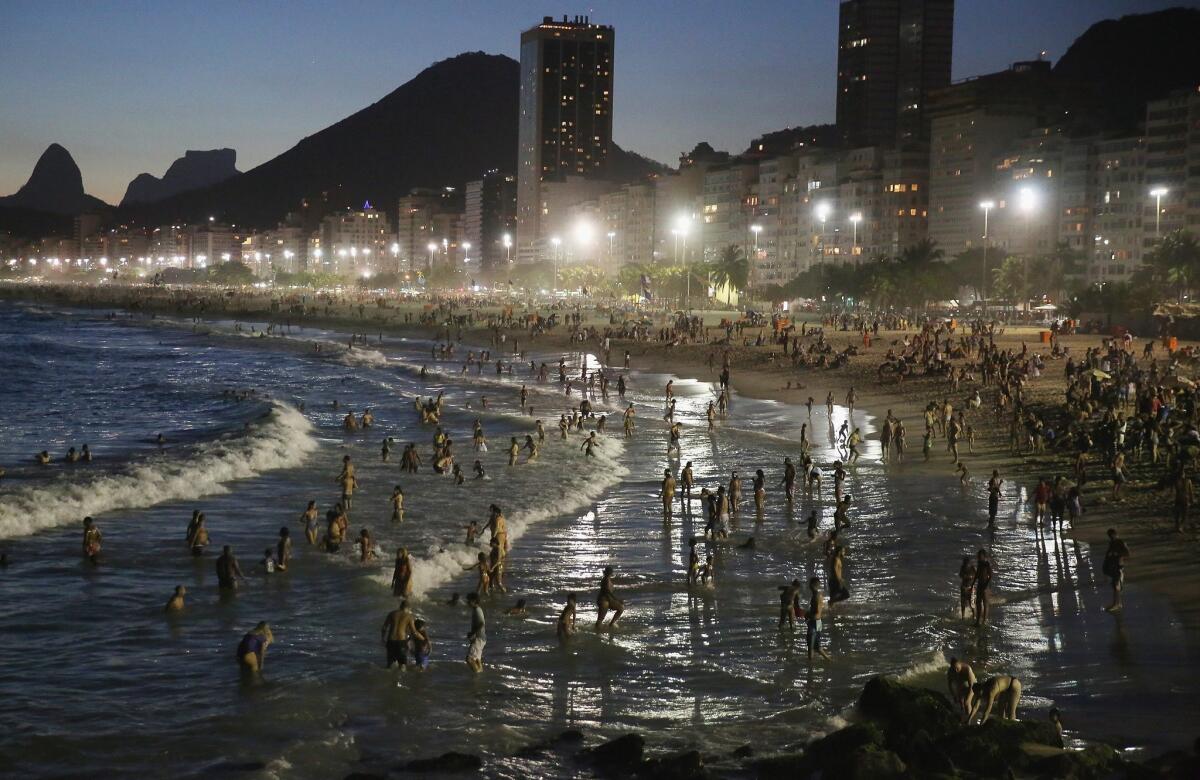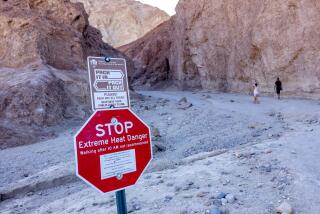Cities sizzle with more heat waves, hotter nights

Temperatures on Earth are creeping upward, and nowhere are they being felt more intensely than in the cities where half of the planet’s population resides, a new study suggests.
Nearly half the planet’s urban areas experienced a significant rise in the number of extreme heat days and of heat waves that lasted six days or more, according to the study published online Thursday in the journal Environmental Research Letters.
Nearly two thirds of those cities also experienced significant increases in the number of extemely hot nights, and three quarters experienced a significant drop in extreme wind events from 1973 to 2012, the study shows.
The data suggest that global climate shifts are particularly acute in urban areas, in part due to changes in land use as these population centers become more dense, sprawling and paved.
“Forty years gives you a pretty good idea of what’s going on, and it does overlap reasonably with the period of the largest global emissions and largest global warming,” said UCLA hydrologist Dennis Lettenmaier, lead author of the study. “So, from that standpoint, it makes sense.”
Researchers focused on 217 urban areas where population exceeded 250,000 people, and where complete weather data were available from 1973-2012. They counted extreme heat waves as a series of six or more days when temperatures reported by the National Climatic Data Center were in the top 1% for the four-decade period.
Statistically, those ought to be rare days, indeed - fewer than four (3.65) in any year. But worldwide, the median number of days in that extreme niche has crept up from that statistical norm to about 12 per year, the study showed.
Globally, a streak of at least six such days occurred about four times in the 1970s, and rose to seven times by the end of the 2010, according to the study. The sharpest increases occured in Europe, Africa and eastern Asia, the study showed.
Extreme heat events can be deadly. An estimated 3,332 U.S. residents died from the effects of heat from 2006-2010, according to the Centers for Disease Control and Prevention.
The researchers also paired 142 urban stations with nearby non-urban ones, and found that the frequency of extreme heat periods rose more sharply in urban zones.
The researchers previously found a similar rise in heat waves over six decades in the contiguous U.S. states. Other studies have turned up similar global trends.
A 2010 study found that from 1965-2005, the incidence of extreme heat events in the most sprawling metropolitan areas was twice that of more condensed ones. A study of the Phoenix area that same year showed that changes in land use contributed significantly to heat events from 1973-2005.
Scientists refer to the sizzling city phenomenon as the urban heat island effect, and for a while, the location of temperature gauges in such areas was suspected to be adding some confusion to long-term measurements of Earth’s warming. But most studies remove such anomalies or find ways of statistically handling their effects.
A group of scientists based at UC Berkeley who were skeptical about the quality of land-based temperature stations used by most scientists found no evidence of urban heat island effects biasing the data from 1950-2010.
Feeling warm about science? Follow me on Twitter: LATsciguy







